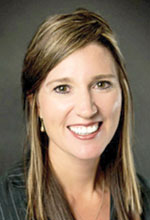Investing with Faith / Ann Schneider
Using beneficiary designations as an estate planning tool

In a world where things can sometimes be overly complicated, we often yearn for simple ways to effectively accomplish our goals. When it comes to estate planning, one tool often used to simplify the transfer of assets after death is the naming of death beneficiaries.
Beneficiaries can be established through multiple means, including through the use of payable on death (POD) and transfer on death (TOD) accounts and designations. These designations provide a simple way to have an asset transferred to your intended beneficiaries outside of the formal probate estate administration process.
Though similar in outcome, there are slight differences between POD accounts and TOD designations. A POD account generally refers to a bank account or certificate of deposit, while a TOD designation can be applied to a variety of assets including investments accounts, personal property, business interests and even real estate.
The specific process to establish these designations varies depending on the type of asset. For a financial account, most institutions will have forms to complete to gather identification information for both you and your beneficiaries. After your death, your beneficiaries will need to notify the company and provide a death certificate and verification of their identity.
Financial institutions often also have claim forms to be completed before the account can be transferred. For vehicles, a TOD designation can be added directly to your vehicle’s title. Following death, the beneficiary must take the title and a copy of the death certificate to the Bureau of Motor Vehicles to have the title transferred. In order to establish a transfer on death designation on real estate, a properly executed Transfer on Death deed must be recorded in the county in which the real estate is located. Then after your death, a Transfer on Death affidavit will need to be recorded in the same county to verify the death and provide beneficiary information.
While there are often benefits to beneficiary designations, there can sometimes be pitfalls. Before you take steps to have your assets transferred directly to a beneficiary after your death, you should always give careful consideration to the impact the designation will have on your overall estate plan.
One potential negative result to establishing POD or TOD designations is that you may inadvertently make the wishes stated in your last will and testament impossible to fulfill. This is because named beneficiaries trump contradictory directions stated in your will.
For example, if your will directs that 10% of your total estate is to be distributed to your parish, but you have designated individual beneficiaries on all of your assets, there will be no remaining assets available to complete the intended gift to your parish after your death.
Similarly, if your will directs that your estate be equally divided between your children, but you have designated only one child as beneficiary on your POD or TOD accounts, the named child alone will receive those accounts. Beneficiaries of POD and TOD accounts have no legal obligation to give assets received to any person or entity, even if you include directions in your will or otherwise intend for them to do so. Furthermore, transfers from one individual to another could trigger gift tax consequences which may impact the original recipient’s own estate plan.
It is always advisable to consider your estate plan as a whole and to seek advice from your trusted advisors before putting a plan into action. The archdiocesan Catholic Community Foundation has several resources available to help as you consider how to make your estate plan a reality. For more information or help, e-mail ccf@archindy.org or call 317-236-1482.
(Ann Schneider is a founding member of Taylor, Chadd, Minnette, Schneider & Clutter law firm in Indianapolis. She also is a member of the Catholic Community Foundation Planned Giving Committee and of St. Jude Parish in Indianapolis.) †
